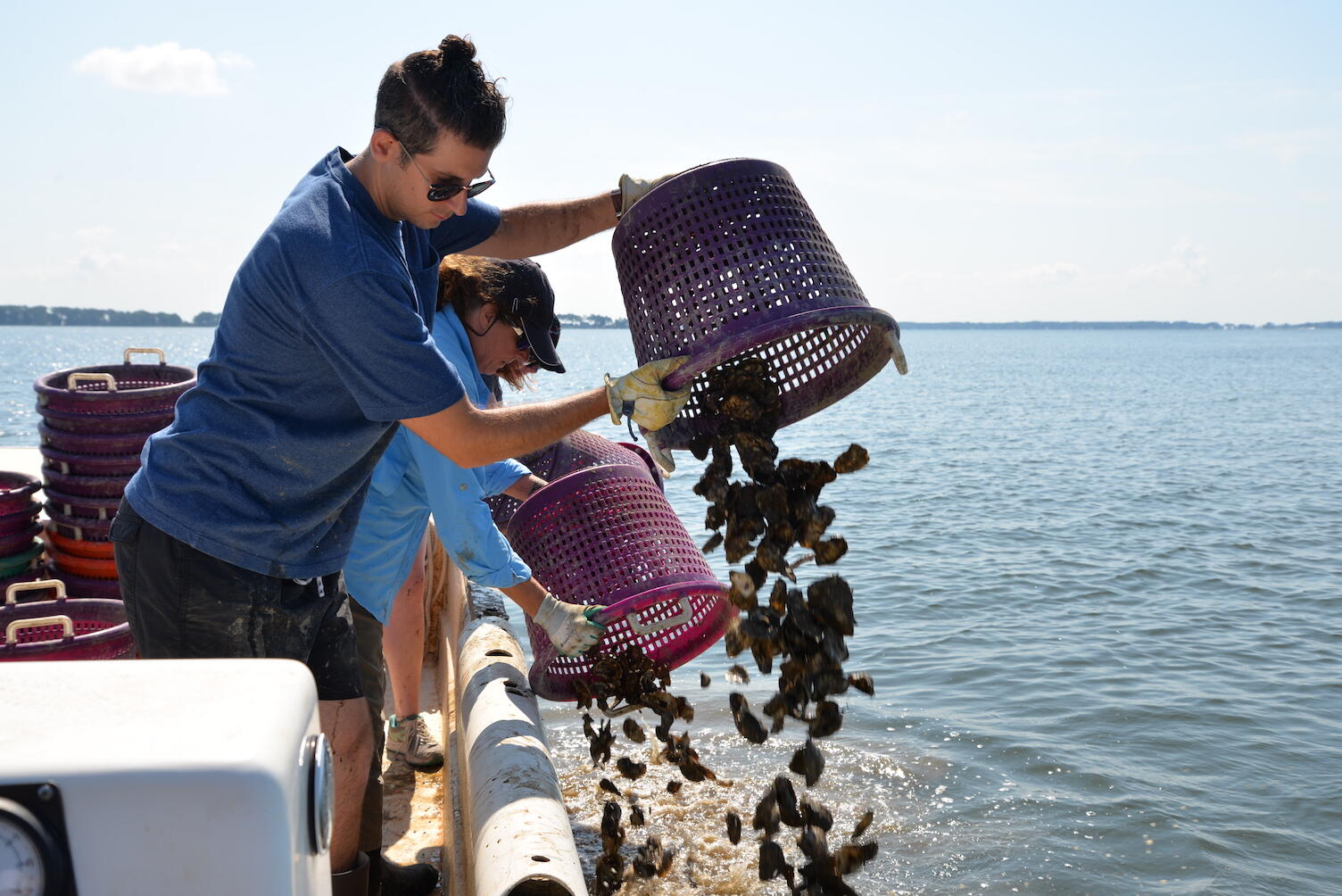
July 22, 2020
With new federal grant, VCU’s Virginia Oyster Shell Recycling Program expands its reach
Share this story
A grant from the National Oceanographic and Atmospheric Administration will help the Virginia Oyster Shell Recycling Program with education and expand its geographic reach.
The new grant is the first formal NOAA award supporting the oyster restoration program, which is part of Virginia Commonwealth University Life Sciences and is located at the VCU Rice Rivers Center in Charles City County. The program — primarily supported with charitable contributions and a lot of volunteer hours — is a public-private collaborative effort that takes oyster shells destined for the trash and after seeding them with baby oysters, returns the shells to the Chesapeake Bay. Annually, volunteers divert more than 125,000 pounds of oyster shells from the landfill for restoration efforts. If all of those shells are returned, that is replenishing more than 55 million oysters in the Chesapeake Bay, according to Todd Janeski, the Virginia Oyster Shell Recycling Program’s director.
The $62,174 NOAA grant supports oyster restoration efforts for the lower Piankatank River in the Middle Peninsula, where the recycling program will partner with localities and the Virginia seafood industry to develop and implement an outreach and engagement strategy to increase public awareness, support and involvement in local oyster restoration. The grant also will support efforts in Northern Virginia, where the Virginia Oyster Shell Recycling Program will pilot shell recycling in Fairfax County to establish a collection process, storage location and hauling mechanism.
“Locally, this proposal will [also] support the existing shell recycling program activities in Richmond, Henrico, Chesterfield and Goochland counties working with PlanRVA Regional Commission, and include expansion into Hanover County,” Janeski said. “This award will also support the development of marketing to consumers in businesses that participate in the program as well as the processing of shell at the Rice Rivers Center.”
The federal funds originally were awarded to the Virginia Marine Resources Commission by NOAA through the Virginia Coastal Zone Management Program. When the commission did not need the full amount, staff worked with NOAA and the coastal management program to identify other projects to support.
“Recycling oyster shells is a wonderful way for restaurants and individuals to help clean and protect Virginia's coastal waters — both in the Chesapeake Bay and on the Seaside of Virginia's Eastern Shore,” said Laura McKay, manager of the Virginia Coastal Zone Management Program. “After several hundred years of hauling shell out of our coastal waters and losing all of that hard substrate on which young oysters depend for attachment and further growth, it's critical that we get more shell back into the water. This grant to VCU aims to do just that and we are delighted to be able to assist the VCU Rice [Rivers] Center's dedicated staff in this important endeavor.”
Janeski said the program building up oyster reefs has tapped into the crustaceans’ powerful filtration and habitat abilities, which has in turn benefited crabs, fish and the production of more oysters.
“So there's a huge impact,” Janeski said. “Over these few years, we have returned 30 million oysters. We hoped to plant 30 million more this year, but due to the COVID pandemic we will do about 8 million this year. Of the 30 million oysters that we have returned, I think it's pretty safe to say that we have helped filter hundreds of billions of gallons of water per year.”
Subscribe to VCU News
Subscribe to VCU News at newsletter.vcu.edu and receive a selection of stories, videos, photos, news clips and event listings in your inbox.







